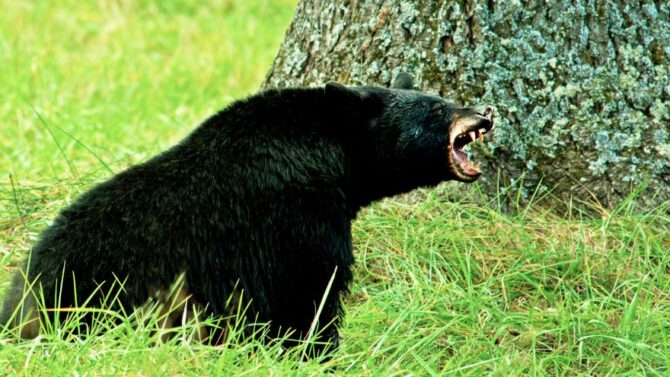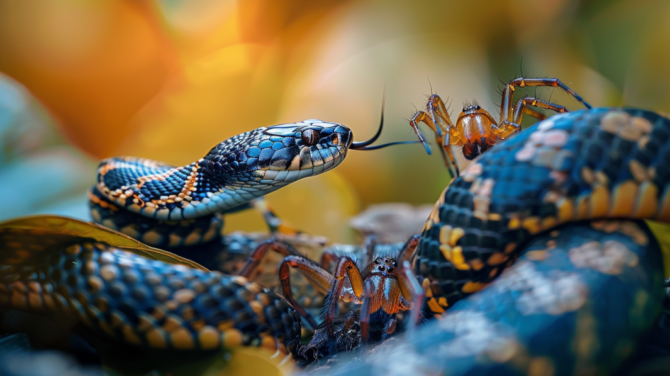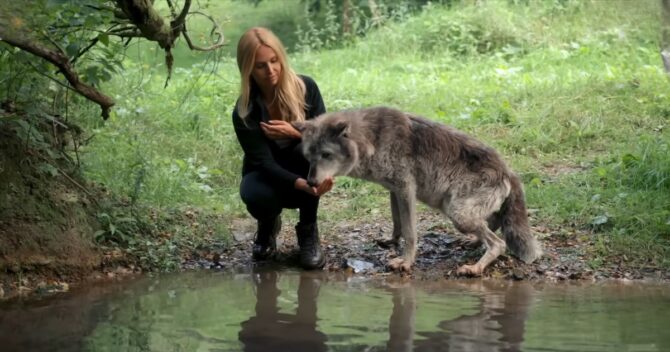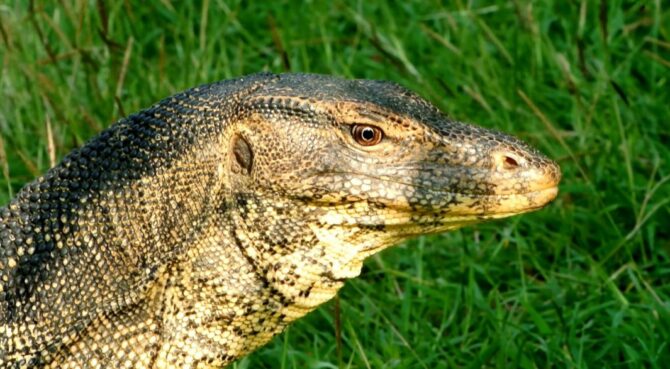Washington is a beautiful state. With a very low crime rate, it is one of the safest places to live in the United States.
It is also known for its magnificent mountains, fertile farmlands, and snow-capped volcanoes—a great place to visit.
While the state is home to some amazing wildlife, some of these creatures are terrifying and can effortlessly snap life out of their prey.
The most dangerous animals in Washington State include venomous snakes, bears, elk, cougars, poisonous spiders, and more. These animals can be deadly to humans, and you should take extra precautions when hiking and exploring the area.
Learn about 10 of Washington’s most dangerous animals and what to do if you come across them.
What are the Most Dangerous Animals In Washington State?
1. Western Rattlesnake

- Scientific name: Crotalus
- Class: Reptile
- Habitat: Arid deserts, dunes, forests, swamps, grasslands, marshes, plains, mountains, meadows
- Diet: Carnivore
- Conservation status: Threatened but not extinct
The western rattlesnake is only one of the dozen snakes in Washington state with enough venom to threaten humans.
These snakes are not found in western Washington, so you can generally assume that snakes encountered near Seattle are not venomous.
At maturity, rattlesnakes can reach four feet in length.
They can be identified by their broad, triangular head, rhomboid scales on their backs, and rattles at the end of their tails.
Rattlesnakes do not always attack humans. Therefore, they are unlikely to bite unless they feel threatened.
But if possible, try to stay away because, docile or not, they’re still wild animals.
2. Black Bear
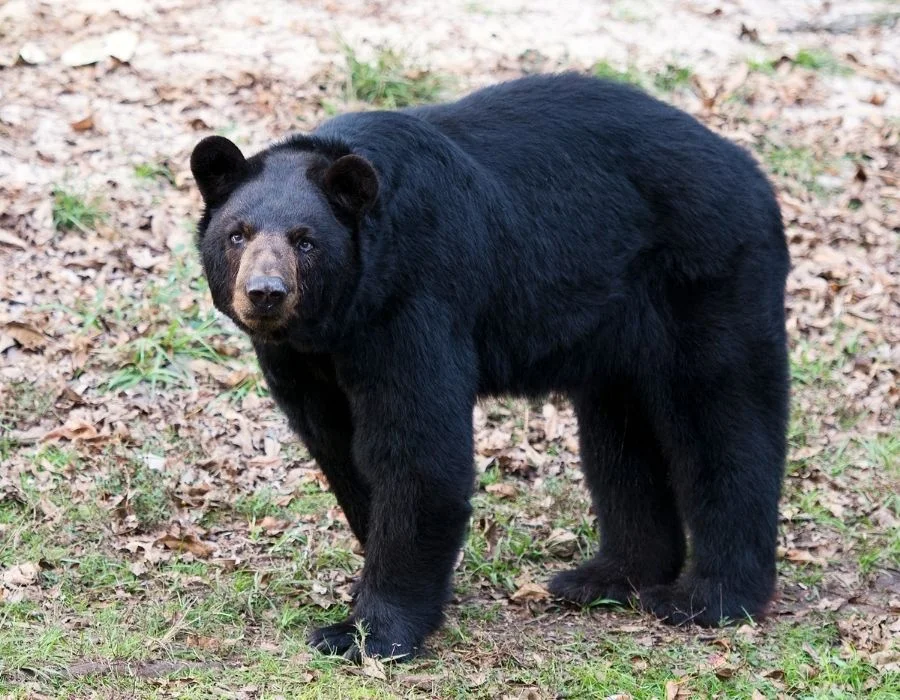
- Scientific name: Ursus americanus
- Habitat: Forests, mountains
- Classification: Mammal
- Diet: Omnivore
- Conservation status: Least concern (population increasing)
Black bears are distributed throughout Washington State, except for the non-forested areas of the Columbia Basin.
Black bears are dangerous even when they don’t want to be (they fear the consequences of attacking people).
Bears spend most of their time foraging for food and eating whatever they find. If humans come close to their territory, they may feel threatened and attempt to attack.
The only recorded fatal attack on humans by a black bear in Washington State was in 1974.
Since 1970, state officials have documented 18 other encounters between humans and black bears, one of which resulted in someone getting injured.
Being in or near areas where bears frequently forage increases the risk of bear attacks.
As part of a safety precaution while in the wild, bears should be avoided by hikers, hunters, and others who enter the bear territory. Also, keep pets away from these areas.
3. Black Widow Spider

- Scientific name: Latrodectus mactans
- Class: Arachnid
- Habitat: Dark areas, crevices, wood piles, loose barks, trees, bushes, hollow logs
- Diet: Carnivore
- Conservation status: Fairly common
The Department of Health notes that there are a few tiny populations of black widow spiders in Western Washington, although they are more prevalent in Eastern Washington.
They are among the most easily recognized spider species in the world.
They are Washington’s most dangerous spiders by far! Many people are undoubtedly aware of the red mark with an hourglass shape that emerges on females.
Black widow spiders are not aggressive, despite their venom is 15 times more poisonous than a rattlesnake’s.
They hardly ever bite people and only do it in self-defense when startled.
However, it’s crucial to be aware that the venom may adversely damage your nervous system if you are bitten.
Some individuals are little impacted by it, and others are significantly impacted.
Small toddlers can die from untreated bites, and untreated neurotoxic venom can be deadly.
One of Washington’s most dangerous creatures that should be avoided if at all possible is the black widow spider.
4. Great White Shark
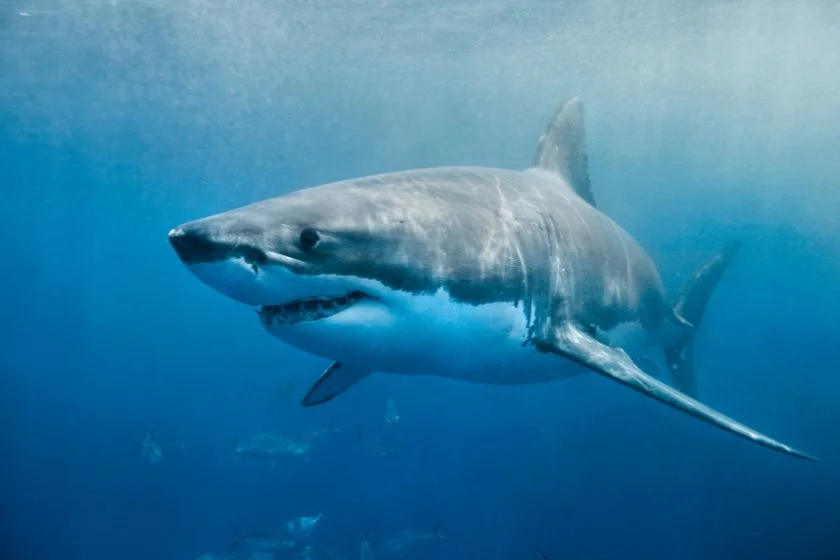
- Scientific name: Carcharodon carcharias
- Class: Chondrichthyes
- Habitat: Temperate coastal and offshore waters
- Diet: Carnivore
- Conservation status: Vulnerable
Although neither of the two known attacks on humans in the state resulted in fatalities, this huge predator shark species has been linked to two attacks.
Most unprovoked attacks on humans have been caused by great white sharks (333 attacks, with 52 being fatal).
They can bite with such force that their victim may bleed for many hours or even pass away.
5. Mountain Lion (also known as Cougar, Puma)
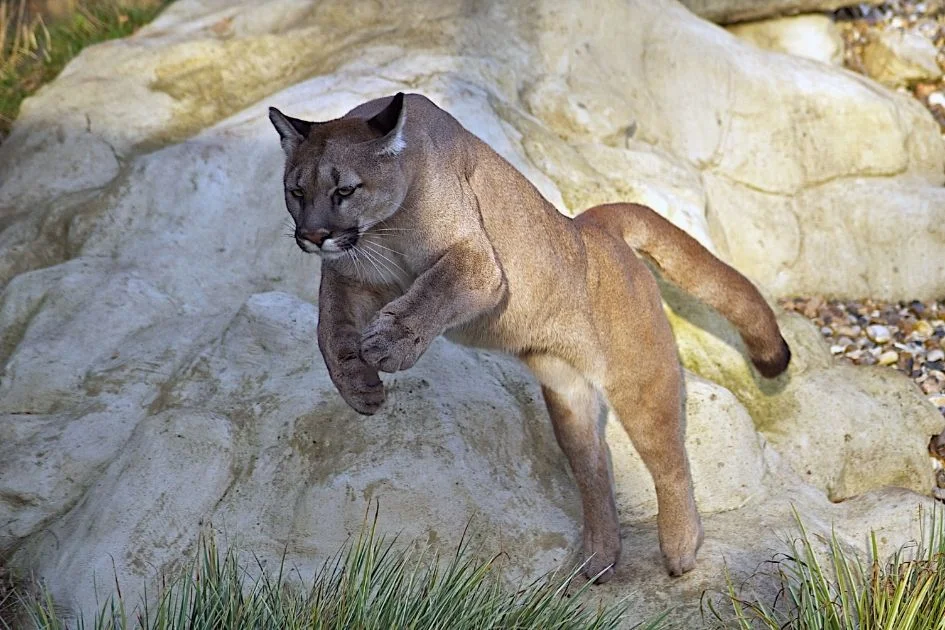
- Scientific name: Puma concolor
- Class: Mammal
- Habitat: Deserts, lowlands, rocky canyons, mountains, wetlands, coastal forests
- Diet: Carnivore
- Conservation status: Least concern (population decreasing)
According to the Washington Department of Fish and Wildlife (WDFW), there are about 2,100 cougars in Washington State.
Wildlife experts say Washington’s 34,168 square miles of forested land is home to cougars.
Except for a significant chunk of the Columbia River basin, most of Washington is home to this environment. A female cougar often weighs less than 110 pounds.
Although they are often not hostile, cougars are huge cats that have killed people and attacked them. For a variety of causes, cougars attack humans.
This might result from a lack of food, a loss of territory, or perceiving people as prey.
Lily A. Kryzhanivskyy, age nine, played hide-and-seek at a church camp in Washington State when a mountain lion attacked her, leaving her with critical injuries and her pals fleeing in terror.
Similar cougar assaults like this one have occurred rather frequently in the state.
6. Blue Shark

- Scientific name: Prionace glauca
- Class: Chondrichthyes
- Habitat: Cool waters
- Diet: Carnivore
- Conservation status: Near threatened
Off the coast of western Washington State, in open ocean waters, there is a shark known as the blue shark or Prionace glauca.
Although the blue shark is not considered violent, it has been linked to many unprovoked attacks and could harm humans.
If you intend to go swimming, exercise caution and adhere to all safety precautions because you can’t be certain there won’t be a shark nearby.
7. Coyote
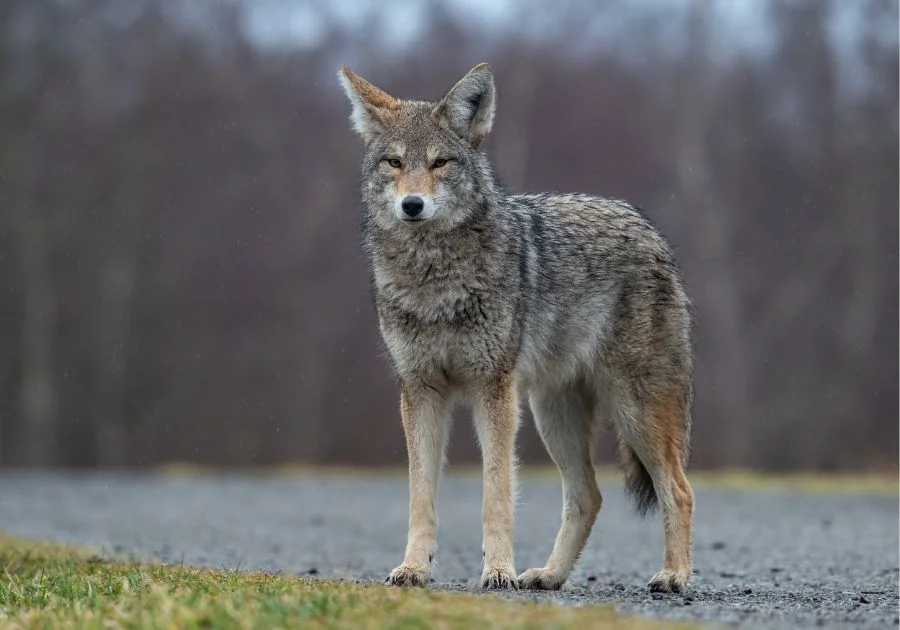
- Scientific name: Canis latrans
- Class: Mammal
- Habitat: Subalpine forests, woodlands, oak savannahs, temperate rainforest, alpine meadows
- Diet: Carnivore
- Conservation status: Least concern (population increasing)
In Washington, there are about 50,000 coyotes. Until 2006, there were no recorded coyote assaults on people in Washington State.
After two young toddlers were attacked while their parents were nearby in Bellevue (King County), Washington Department of Fish and Wildlife officers put two coyotes to death.
Coyotes typically don’t attack people for enjoyment, but they will if provoked.
It is advised not to feed wild animals, including coyotes, because when fed, they lose their fear of humans and start to view them as prey.
It’s critical to keep in mind that coyotes are hunters and have the potential to strike when provoked.
So stay alert to your surroundings and maintain your composure.
8. Moose
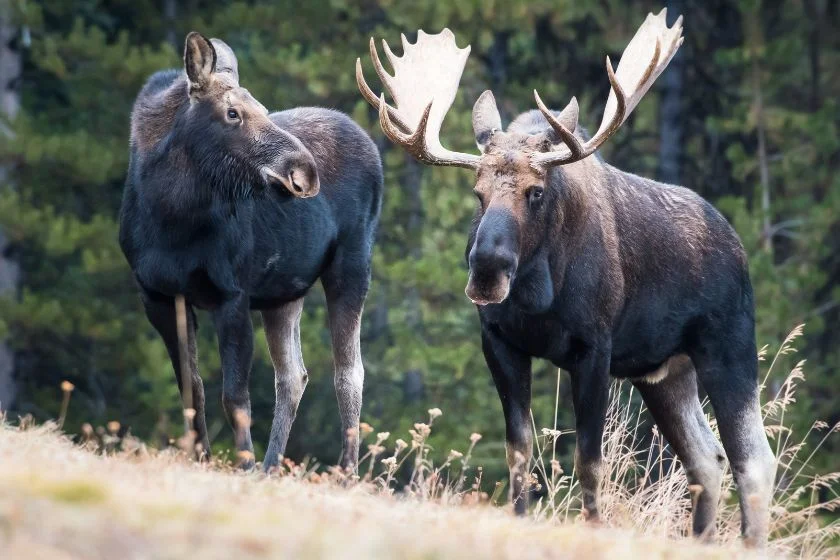
- Scientific name: Alces alces
- Class: Mammal
- Habitat: Forest areas, wetlands, swamps, streams, ponds
- Diet: Herbivore
- Conservation status: Least concern (population increasing)
Currently, there are at least 400 moose in the state, most of which are confined to the northeastern part and the mountains.
However, their range and population are growing.
The aggressive nature of moose makes them large, wild animals. Despite being herbivores, they are not necessarily gentle and harmless.
When the female calf may be in danger, they are especially likely to attack without notice.
They deserve this spot on Washington State’s most dangerous animals.
9. Asian Giant Hornet

- Scientific name: Vespa mandarinia
- Class: Insect
- Habitat: Low forests, mountains
- Diet: Omnivore
- Conservation status: Threatened from extinction
The largest hornet species in the world is the Asian giant hornet.
Asian giant hornets can repeatedly sting even though they typically don’t target people or animals on their own.
They have a stinger that is longer, more dangerous, and capable of puncturing a beekeeping suit than that of the majority of other stinging insects.
Asian giant hornets have been hunted for a very long time in Washington State because they have become a nuisance.
But that doesn’t imply they have been eliminated (so far, Washington entomologists have destroyed four of these murder hornet’s nests).
10. Bobcat
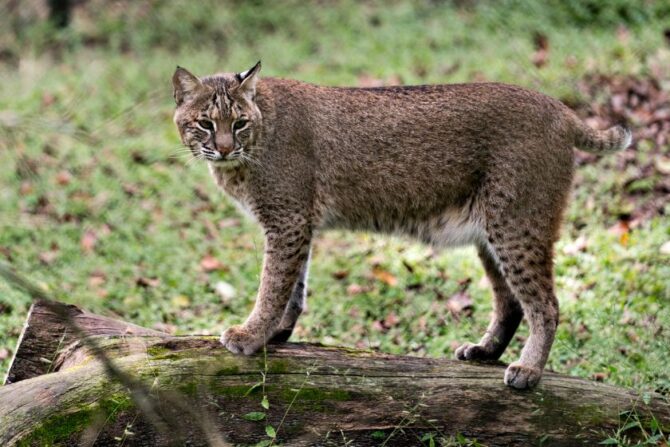
- Scientific name: Lynx rufus
- Class: Mammal
- Habitat: Forests, swamps, semi-deserts, savannas, scrublands, grasslands
- Diet: Carnivore
- Conservation status: Least concern (population stable)
The entire state of Washington is home to bobcats.
When left alone, bobcats frequently don’t threaten people, yet occasionally they can be harmful.
Due to their cautious nature, most bobcats avoid people, but some of them, particularly those with rabies, can be quite aggressive and attack people with their sharp claws.
There have been several unprovoked bobcat attacks on people in recent years. You should observe Bobcats from a safe distance.
If you notice any unusual behavior in a bobcat and think it might be rabies, call animal control immediately and keep your distance.
Washington State Wildlife Safety Tips
- Because bears are inherently curious creatures, you should stand up, wave your hands above your head, and speak quietly to the bear if it approaches you. Avoid making direct eye contact by moving back. Avoid running away from bears since doing so signals them that you are prey, setting off their hunting instincts.
- While hiking, WDFW advises making noise and leashing pets to let the animals know you are there.
- Be mindful of your surroundings, so you don’t unintentionally shock any wildlife.
- WDFW advises having a bear spray on hand while outside and being familiar with its application.
- Keep calm and quiet if a stinging insect approaches you or you unintentionally find yourself close to a busy nest. Prevent swinging or swaying as you leave the location to avoid starting an attack.
- When spending extended periods outside, stay away from wearing sweet-smelling perfumes or colognes to avoid attracting stinging insects.
- Making noise from a distance frightens coyotes and usually sends them running, so you can scare them away.
Wrap-up
There are many animals in Washington state, including some dangerous ones.
We’ve listed 10 of these creatures and their threat to humans.
Stay safe by not getting too close to any of these most dangerous animals in Washington State and abiding by the safety rules.
